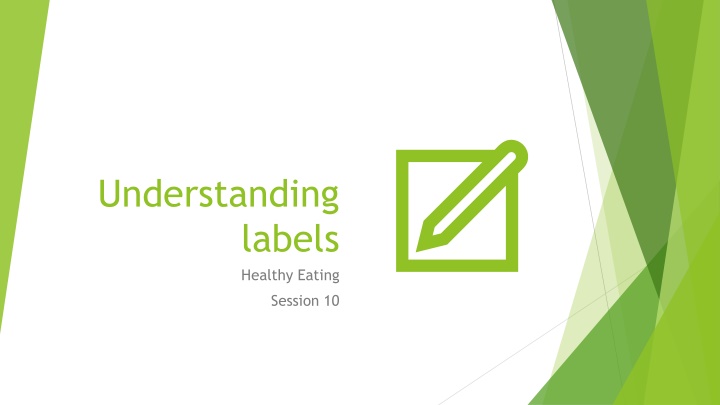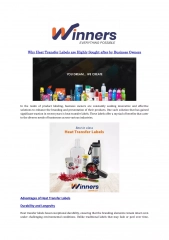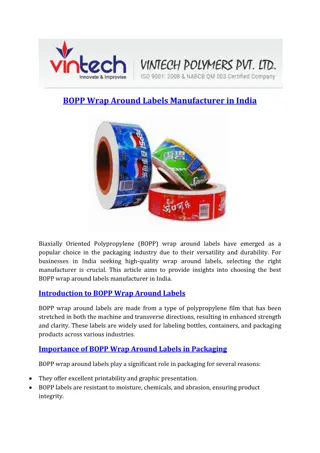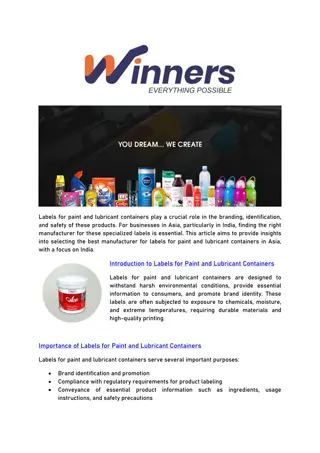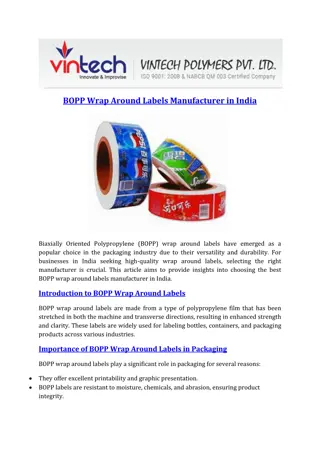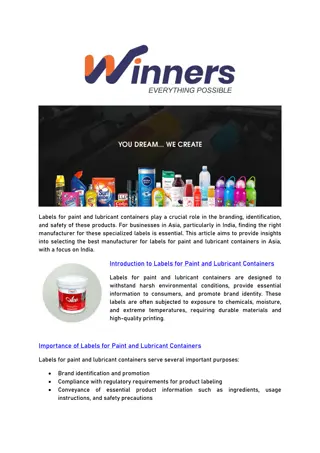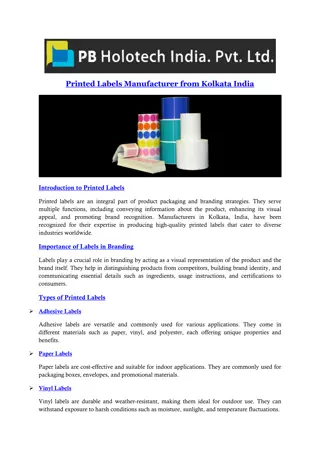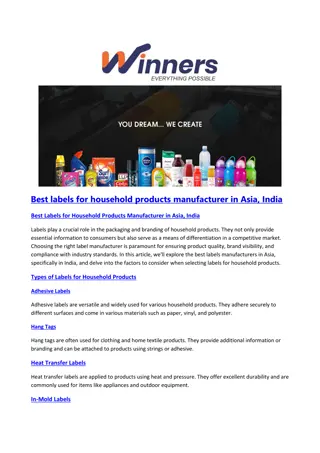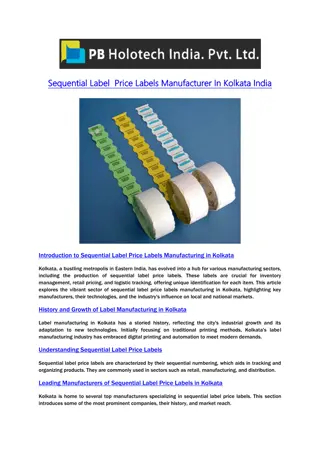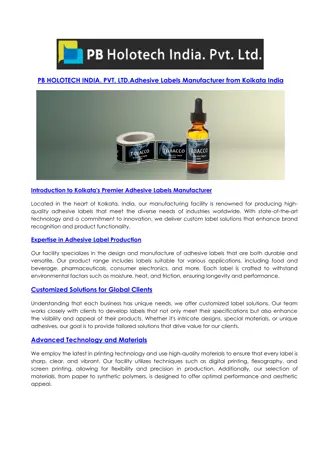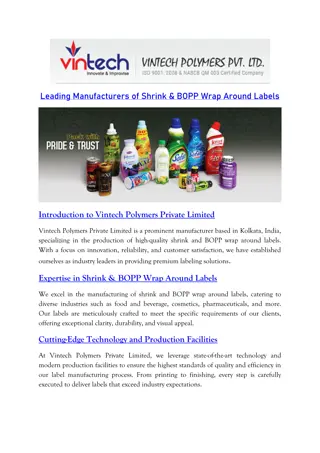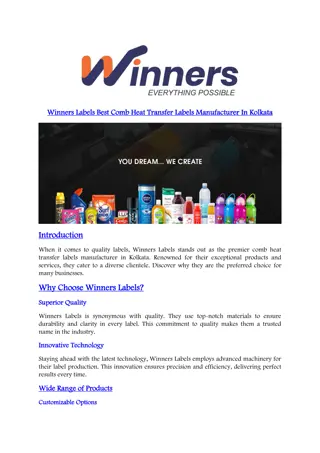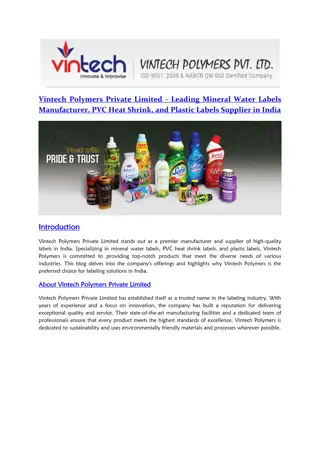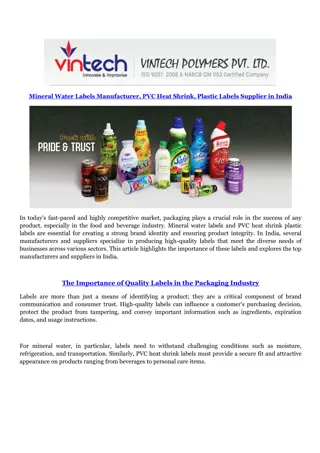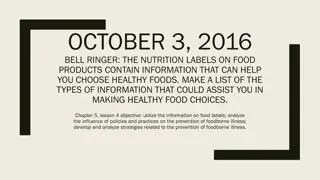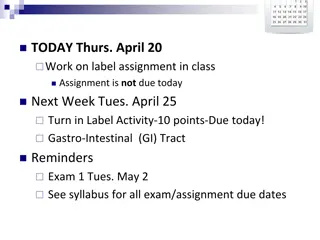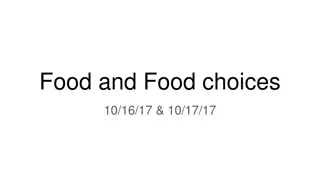Importance of Reading Food Labels for Making Informed Decisions
Reading food labels is crucial for maintaining a healthy lifestyle and making informed choices. This content discusses why understanding labels is important, how to interpret nutritional information, challenges consumers face, and the Traffic Light System for easy label comprehension. It also highlights the mandatory information displayed on food labels in the UK and provides an activity for exploring calorie content and food groups. Additionally, a video resource is recommended to aid in understanding why nutritional information may vary. Empower yourself by learning to read and interpret food labels effectively.
Download Presentation

Please find below an Image/Link to download the presentation.
The content on the website is provided AS IS for your information and personal use only. It may not be sold, licensed, or shared on other websites without obtaining consent from the author.If you encounter any issues during the download, it is possible that the publisher has removed the file from their server.
You are allowed to download the files provided on this website for personal or commercial use, subject to the condition that they are used lawfully. All files are the property of their respective owners.
The content on the website is provided AS IS for your information and personal use only. It may not be sold, licensed, or shared on other websites without obtaining consent from the author.
E N D
Presentation Transcript
Understanding labels Healthy Eating Session 10
Context and background Do you think being able to read labels is important? Would you look at the labels when buying any products? If so, do you understand it. If not, why?
Why reading labels is important Helps keep you healthy by making informed decisions Keeps you safe Detects ingredients that may cause you harmful reactions Warns you about the date of consumption Can you think of anymore?
Activity for exploratory learning: working in groups with the labels provided, can you calculate how many calories are in the whole product and the content for all the food groups. Challenges consumers face Is this different to the figures displayed on the label attached to the product? Why is this? Next slide
Continued https://www.youtube.com/watch?v=Orj7p3KQcyQ This video helps explain why nutritional information may be different and what you must look for when looking to understand labels. What is your thoughts on this?
What is displayed on labels? In the UK, companies must legally display the following information. Name of food Mass (weight or volume) Use by and Best Before dates. How to store the food How to prepare the food Details of the company making or selling the product The country of production Ingredients The 14 most common allergies Nutritional information
Traffic Light System To make labels easy to understand, a new traffic light system for food labels has been recommended by the Food Information Regulation to help people make healthy choices. Green healthy choice, can be eaten all the time. Amber medium, can be eaten most of the time. Red high, should only be eaten sometimes. A way to make heathier choices through label reading is by ensuring that each product consumed is either green or amber.
Traffic Light System The traffic light system shows whether the food product is high or low in: Fat Saturated fat Sugars Salt For example, sugars will be shown as red (high) if the product contains more than 22.5g of sugar per 100g. It will be green (low) if there is less than 5g of sugar per 100g. The consensus is that you try to consume products that are green or amber to make healthier decisions.
Green A
It is not as simple as looking at the colour and buying a product based on this, you need to be conscious that the product is only green for 100g. Can the traffic light system can be wrong? Consumers face a range of challenges as information can be difficult to understand. For example, the traffic light system is only based on 100g for that product. This can give a false representative because the product may have 800g and per 100g, it may be green. However, if you consume the whole product, you will be in the red as you need to multiply the green value by 8 to find out how much is in each.
Game for understanding The tutor will have a range of labels with them and call out a product. If participants think it should be categorised as mostly green they continue to run. Amber, they jog on the spot Red, they stop immediately. There are variations of things game depending on resources and available space.
Critical reflection Reflect on all the items you have purchased that week and what colour would typically be associated with them. If the items you most frequently purchase are in red, what could be the consequences of this. Did you think all your choices would be in that category?
